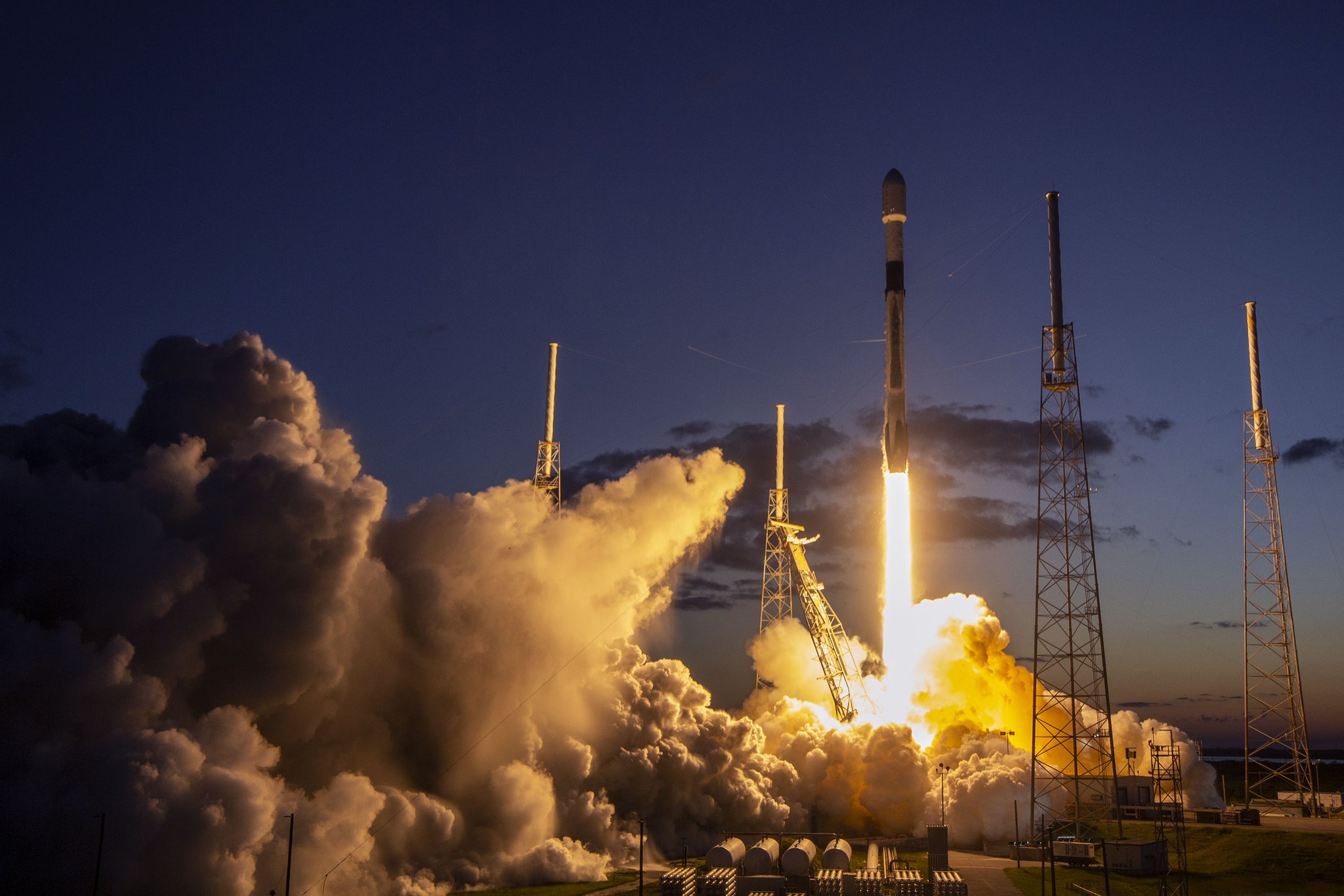TAMPA, Fla. — SpaceX Oct. 8 successfully deployed the first two of seven satellites Intelsat needs to clear C-band spectrum in the United States, keeping the operator on course to launch all but one of them before the end of this year.
A Falcon 9 carrying Galaxy 33 and Galaxy 34 lifted off at 7:05 p.m. Eastern from Cape Canaveral, Florida, and deployed the satellites into geostationary transfer orbit about 40 minutes after liftoff.
The rocket’s reusable first stage also successfully landed on a SpaceX drone ship in the Atlantic Ocean following a record-tying 14th flight.
A helium leak had forced SpaceX to scrub a previously planned Oct. 6 launch, and a follow-up flight Oct. 7 was also postponed.
It will take about two weeks for the satellites to use onboard propulsion to reach their final geostationary orbit, according to Jean-Luc Froeliger, Intelsat’s vice president of space systems engineering and operations.
Northrop Grumman built the satellites, which will help Intelsat move broadcast customers into a narrower swath of its C-band spectrum to give more frequencies to terrestrial 5G operators in the United States.
Intelsat stands to get nearly $5 billion from the Federal Communications Commission if it can fully vacate the lower 300 MHz slice of C-band by the regulator’s Dec. 5, 2023, deadline.
Rival satellite operator SES is in line for nearly $4 billion if it can clear its C-band spectrum in time — after recently losing a legal challenge for an equal split.
SpaceX launched the first of five C-band replacement satellites in June that SES needs in orbit for its spectrum-clearing efforts, and United Launch Alliance deployed another two Oct. 4.
SES CEO Steve Collar recently said he expects SpaceX will launch its final two C-band satellites late this year or early next.
“Intelsat might not have launched the first C band satellites but is planning to launch 6 of the 7 c band satellites before the end of the year,” Froeliger told SpaceNews via email.
“By the end of 2022 Intelsat will have launched more C band replacement satellites than SES. In any case what is important is to have all these new C band spectrum clearing satellites in service before the FCC deadline of December 5th, 2023, which Intelsat is on track to do.”
Maxar is providing Intelsat’s remaining five C-band replacement satellites.
SpaceX is slated to launch two of them in November, according to Intelsat, and Arianespace is due to deploy another pair in the fourth quarter of this year.
Intelsat said SpaceX will launch its final C-band replacement spacecraft in the second quarter of 2023.
